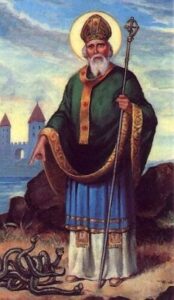“The Loophole”
In a bustling port of Everett bar on Saint Patrick’s Day, two modern-day sailors, Jack and Michael, found themselves immersed in the jovial spirit of the celebration. Michael a Catholic sailor, proudly wore his cross necklace, a symbol of his faith, while Michael, a Mormon sailor, sported a shamrock pin gifted to him by the charming barmaid.
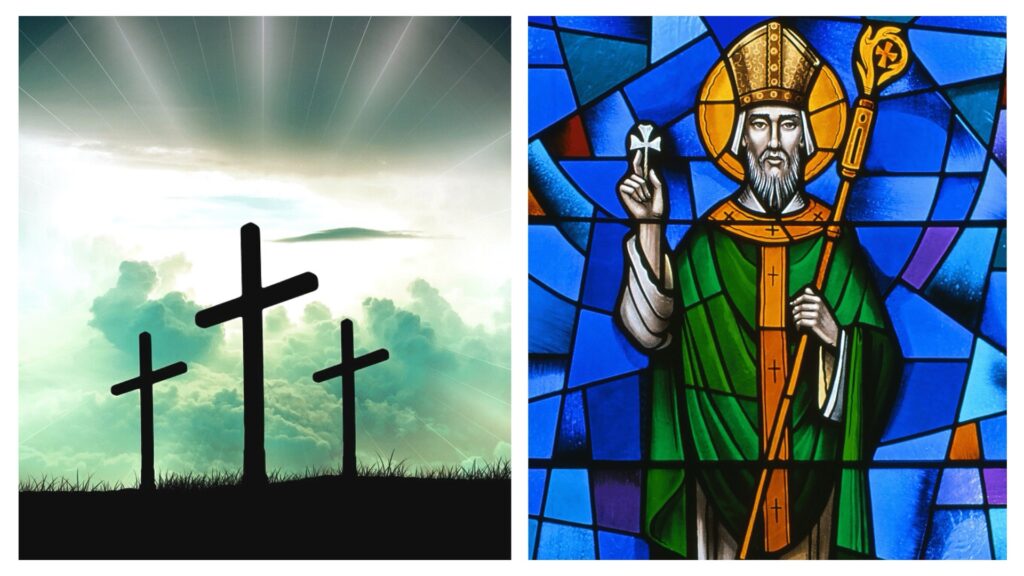
As the Guinness flowed and the music filled the air, Jack and Michael joined in singing traditional Irish tunes. Their voices harmonized in songs like “Whiskey in the Jar,” “The Wild Rover,” and “Molly Malone,” embracing the festive atmosphere of the day. Jack was particularly good at this.
Amidst the merriment, Michael couldn’t help but notice Jack’s shamrock pin. With a playful grin, he teased his friend about wearing a symbol representing the Trinity, suggesting that perhaps it was a sign for him to consider converting to Catholicism and donning a cross like himself.
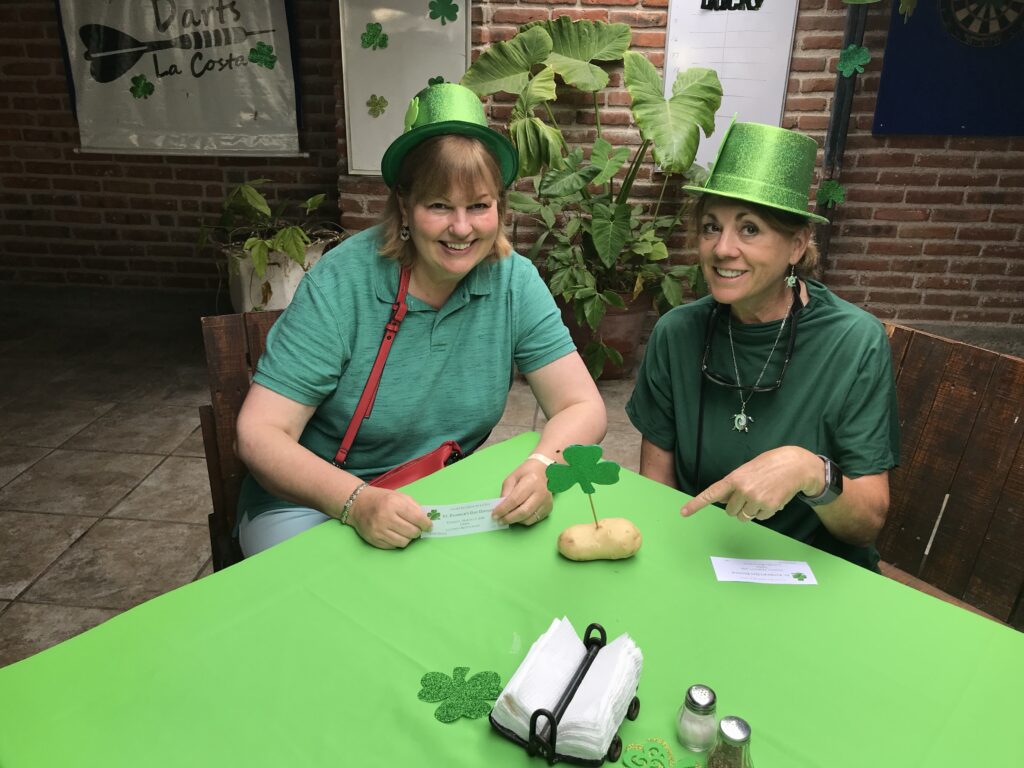
In response, Jack quipped back, “Well, Michael on Saint Patrick’s Day, we’re all a bit Irish in spirit! My Young Single Adults (YSA) group hosts Saint Patrick’s Day events, and activities2. We have been taught not only how to sing the proper songs but also to avoid putting a religious meaning to anything people wear. Even Celtic pagan jewelry is OK. And since beer is a kind of food it might adhere to the Mormon health code known as the Word of Wisdom – anyway at least on Saint Patrick’s day. Michael had to agree because it is well known that during a fast, monks eat nothing but they do drink beer, for nourishment.

The banter between the two friends continued as they raised their glasses to friendship, unity, and the shared joy of celebrating Saint Patrick’s Day together in true Irish fashion.
Shamrock
Saint Patrick used the shamrock, a common three-leaved plant found throughout Ireland, as a pedagogical tool to explain the concept of the Holy Trinity to the pagan Irish during the 5th century. The story behind this teaching method is deeply rooted in the challenges Saint Patrick faced in evangelizing a population with little to no knowledge of Jesus and his gospel. Faced with the daunting task of explaining complex theological concepts such as the Trinity, which posits that God exists as three distinct persons—Father, Son, and Holy Spirit—but is one being, Saint Patrick turned to the natural world for a simple yet profound analogy.
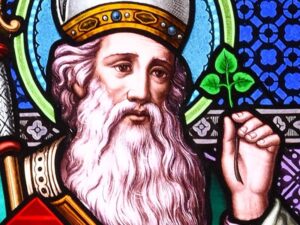
One popular legend recounts how Saint Patrick, while instructing King Laoghaire’s daughters, Ethne and Fedelm, in Connaught, used the shamrock to illustrate how just as the single plant has three leaves, so too does the one Triune God consist of three separate and distinct Persons1. Another story tells of Saint Patrick preaching directly to King Laoghaire and using the shamrock in his sermon to explain the Trinity1. A third legend describes Saint Patrick encountering Irish chieftains in a meadow, who asked him to explain the Trinity. He picked a shamrock and used it to show how the three leaves are part of the one plant, analogous to the three Persons of the one Supreme Being1.

The tradition of wearing shamrock on Saint Patrick’s Day dates back to the early 1700s, symbolizing a link with Saint Patrick and the Christian message he spread in Ireland2. The shamrock, specifically Trifolium Dubium (the lesser clover), and other plants like Trifolium Repens (White Clover) and Oxalis Acetosella (Wood Sorrel), were traditionally considered to represent the shamrock2. This teaching method not only facilitated the understanding of the Holy Trinity among the Irish but also cemented the shamrock as a lasting symbol of both Saint Patrick and Ireland itself25.
The word “shamrock” originates from the Irish word “seamróg,” which is the diminutive form of “seamar,” meaning “clover.” It translates to “little clover” or “young clover”123. The term first appeared in English in the 1570s1. The shamrock has been associated with Ireland and Saint Patrick, who is said to have used the three-leaved plant to explain the concept of the Holy Trinity—Father, Son, and Holy Spirit—as three parts of one whole34. This usage of the shamrock as a teaching tool by Saint Patrick is a significant reason for its strong association with Irish culture and identity.
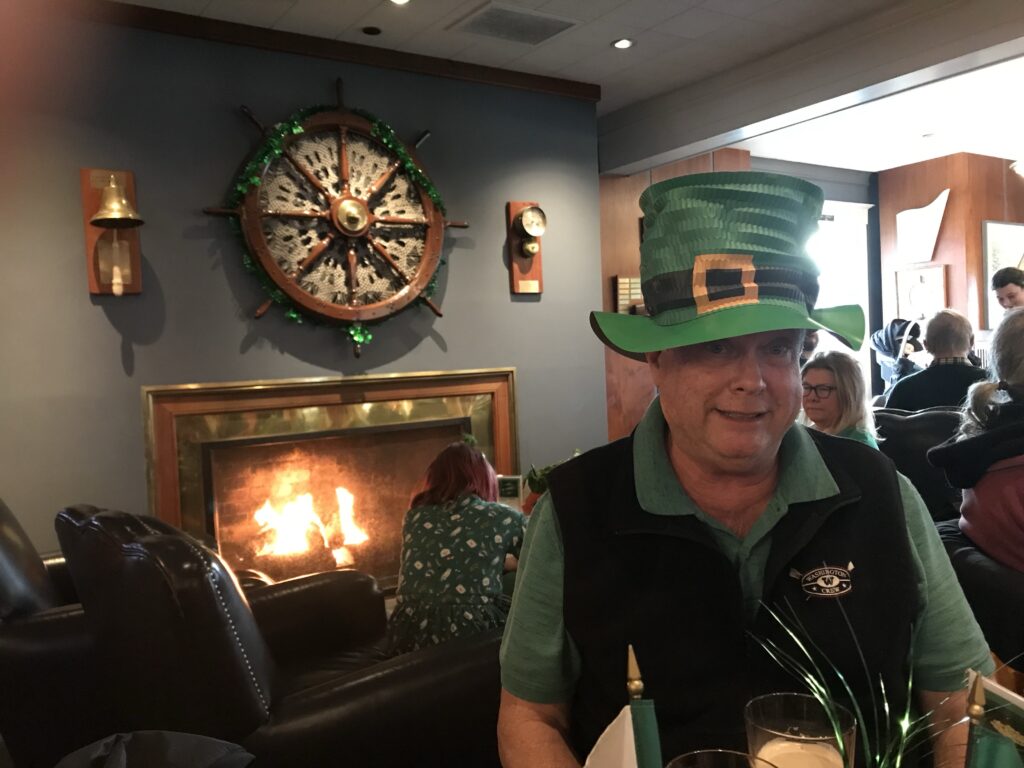
Saint Patrick used the shamrock to explain the concept of the Holy Trinity to the Celtic pagans. The shamrock, with its three leaves growing out of a single stem, served as a visual representation of the Father, Son, and Holy Spirit as three distinct persons in one God12.While Saint Patrick used this analogy to illustrate the unity of the Trinity, some groups have misinterpreted this teaching, mistakenly believing that Catholics worship multiple gods due to their understanding of the Trinity as three persons in one God5. This misconception arises from a lack of understanding of the theological concept of the Trinity and its significance within Catholic doctrine.
Some Christian organized religions that do not believe in the Trinity include:
- United Church of God
- Church of God International
- The Church of Jesus Christ of Latter-day Saints (Mormons)
These denominations have theological beliefs that differ from the traditional Christian doctrine of the Trinity, emphasizing distinct interpretations of the nature of God and the relationship between God, Jesus Christ, and the Holy Spirit12.
The Church of Jesus Christ of Latter-day Saints, commonly known as Mormons, holds a unique view on the Trinity that differs from traditional Christian doctrine. Mormons do not adhere to the traditional Trinitarian belief in one God consisting of three distinct persons—Father, Son, and Holy Spirit. Instead, Mormon theology teaches that the Father, Son (Jesus Christ), and Holy Spirit are separate and distinct beings with individual roles in the Godhead23. This belief contrasts with the concept of the Trinity as a single unified Godhead in traditional Christian theology.
Several organized religions were started in the USA, reflecting the country’s diverse religious landscape. Some of these religions include:
- Mormonism (The Church of Jesus Christ of Latter-day Saints): Founded by Joseph Smith in the early 19th century in New York, Mormonism is one of the most well-known religions to originate in the United States1.
- Christian Science: Established by Mary Baker Eddy in the late 19th century in Massachusetts, Christian Science is a Christian denomination with unique beliefs and practices1.
- Seventh-day Adventists: The Seventh-day Adventist Church was founded by Ellen G. White and others in the mid-19th century in the United States, emphasizing Sabbath observance and health principles1.
- Jehovah’s Witnesses: Founded by Charles Taze Russell in the late 19th century, Jehovah’s Witnesses have a significant presence in the United States and worldwide1.
These organized religions have roots in American history and have grown to become influential denominations within the country’s religious landscape.
Regarding whether these religions consider Catholics Christians, it varies among denominations. Generally, many Protestant groups, including some that originated in the USA, may have theological differences with Catholicism but still recognize Catholics as fellow Christians due to their shared belief in Jesus Christ as the Son of God and Savior. However, individual perspectives on this issue can vary among different Christian denominations based on their doctrinal interpretations and theological traditions.
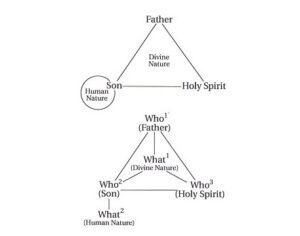
In Islam, the view on the Trinity is that it contradicts the fundamental monotheistic belief in the oneness of God. Islamic teachings reject the concept of the Trinity, which posits three separate and distinct Divine Persons in Godhead: God the Father, God the Son (Jesus), and God the Holy Spirit2.
From an Islamic perspective, this doctrine is seen as a belief in three independent Gods—God (Allah), Jesus (Isa), and Mary—rather than a unified monotheistic deity1. Muslims adhere strictly to the concept of Tawhid, the oneness of God, and consider any belief in multiple gods or partners with God as a violation of this central tenet of Islamic faith5.
Some examples of religions that believe in multiple gods include:
- Hinduism: Hinduism is a major world religion that is polytheistic, with a diverse pantheon of gods and goddesses, each representing different aspects of the divine and the universe3.
- Shintoism: Shintoism, the indigenous religion of Japan, is polytheistic and involves the worship of kami, which are spirits or deities associated with natural elements and ancestors3.
- Wicca: Wicca is a modern pagan religion that embraces polytheism, worshipping a variety of gods and goddesses linked to nature, fertility, and magic3.
- Druidism: Druidism, an ancient Celtic spiritual tradition that has been revived in modern times, is polytheistic and reveres a pantheon of Celtic deities and nature spirits3.
- Asatru: Asatru is a modern revival of pre-Christian Norse paganism that worships multiple gods and goddesses from Norse mythology, such as Odin, Thor, and Freyja3.
- Taoism: Taoism, an ancient Chinese philosophy and religion, incorporates elements of polytheism with a belief in various deities and spirits alongside philosophical teachings3.
- Candomblé: Candomblé is a syncretic Afro-Brazilian religion that blends African spiritual traditions with Catholicism and worships multiple orishas (deities)3.
These religions exemplify diverse polytheistic beliefs where multiple gods and goddesses are worshipped as part of their respective spiritual practices and traditions.
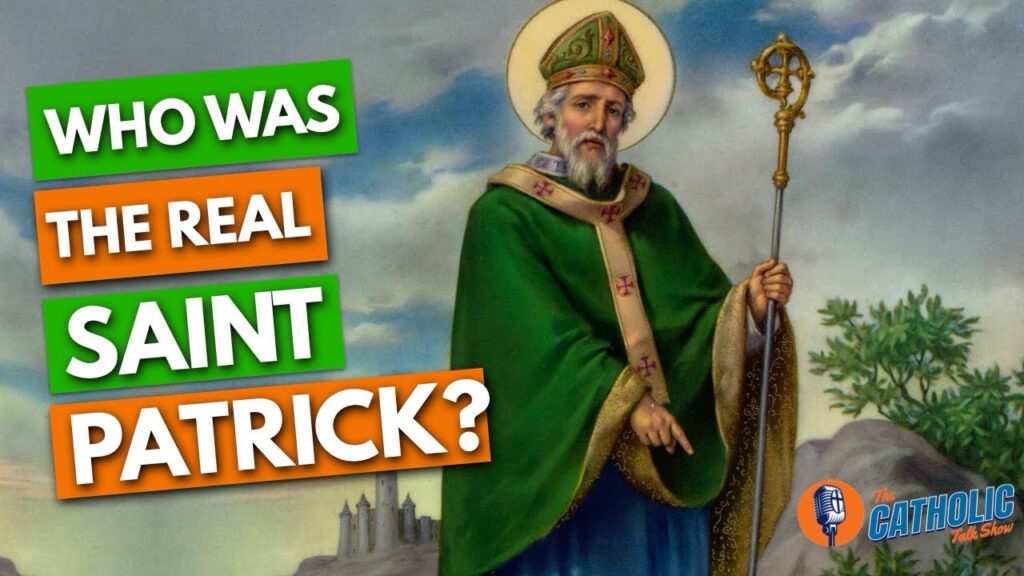
Saint Patrick was Italian?
Saint Patrick was a fifth-century Romano-British Christian missionary and bishop in Ireland, known as the “Apostle of Ireland” and the primary patron saint of the country1. He was born in Britain to a family of Roman descent2. At the age of 16, he was kidnapped from his family villa by Irish raiders and sold into slavery, where he spent six years herding sheep in the west of Ireland2.
Saint Patrick’s parents were Roman, and his father, Calphurnius, was a deacon and a decurion, while his grandfather was a priest5. His mother was named Conchessa5. It is not explicitly mentioned why his parents moved to Londinium, but as his father was a Roman diplomat, it could be inferred that his work may have brought the family there4.
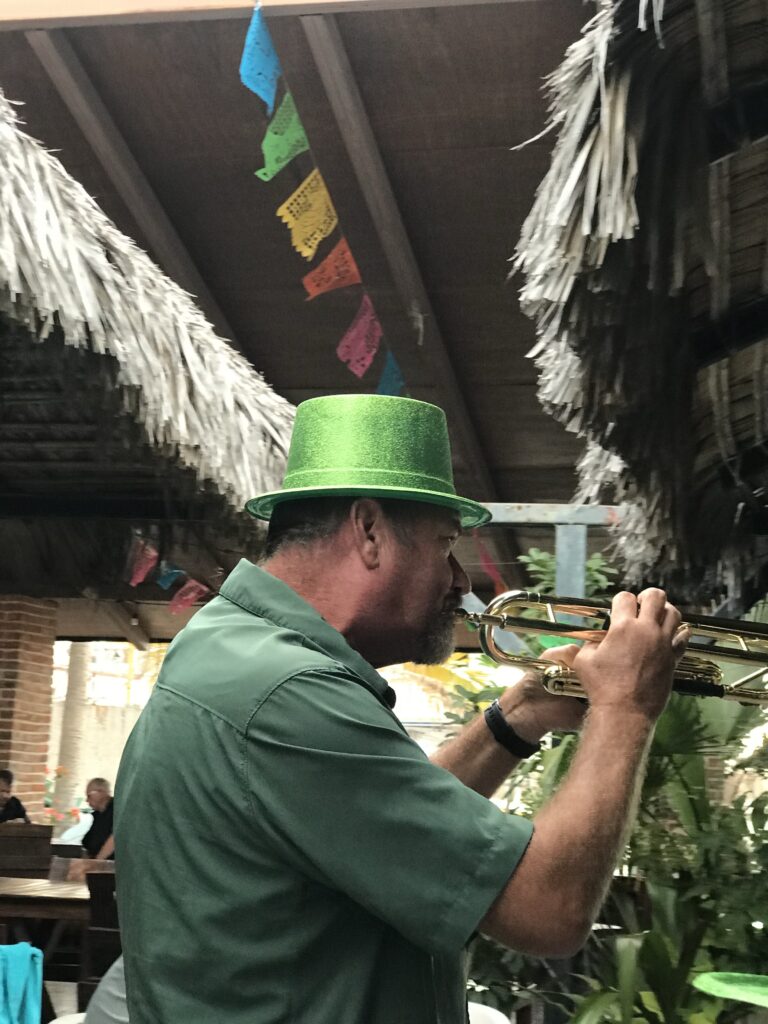
Saint Patrick’s training after his return to Britain is not detailed in the search results, but it is known that he joined the clergy and later returned to Ireland, eventually becoming a bishop4. The claim that Saint Patrick was Italian stems from the fact that his parents were Roman citizens, and during that time, the British Isles were occupied by the Romans. Some believe that his family could have hailed from modern-day Italy, which is why some Italians claim him as their own4.
Saint Patrick was made a saint due to his significant role in converting the Irish to Christianity and his dedication to the Christian mission in Ireland. His writings reflect a humble-minded man who was grateful to have been chosen as the instrument to bring Christianity to many who had worshipped idols6.
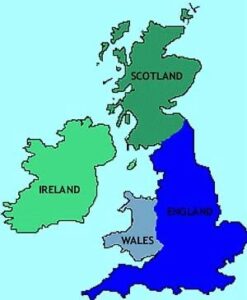
Was Saint Patrick Scottish?
Some people claim that Saint Patrick was born in Scotland, specifically in Kilpatrick near Dumbarton, which is in Scotland13. However, historical records and research indicate that Saint Patrick was actually born either in Dumbarton, Scotland, or on the west coast of Wales around the year 373 CE5. During that time, Scotland was not known as Brittany; it was part of the Roman Empire and later became part of the Kingdom of the Picts before eventually being unified with the Kingdom of Scotland in the 9th century5. The confusion about Saint Patrick’s birthplace may stem from differing historical accounts and interpretations over time.
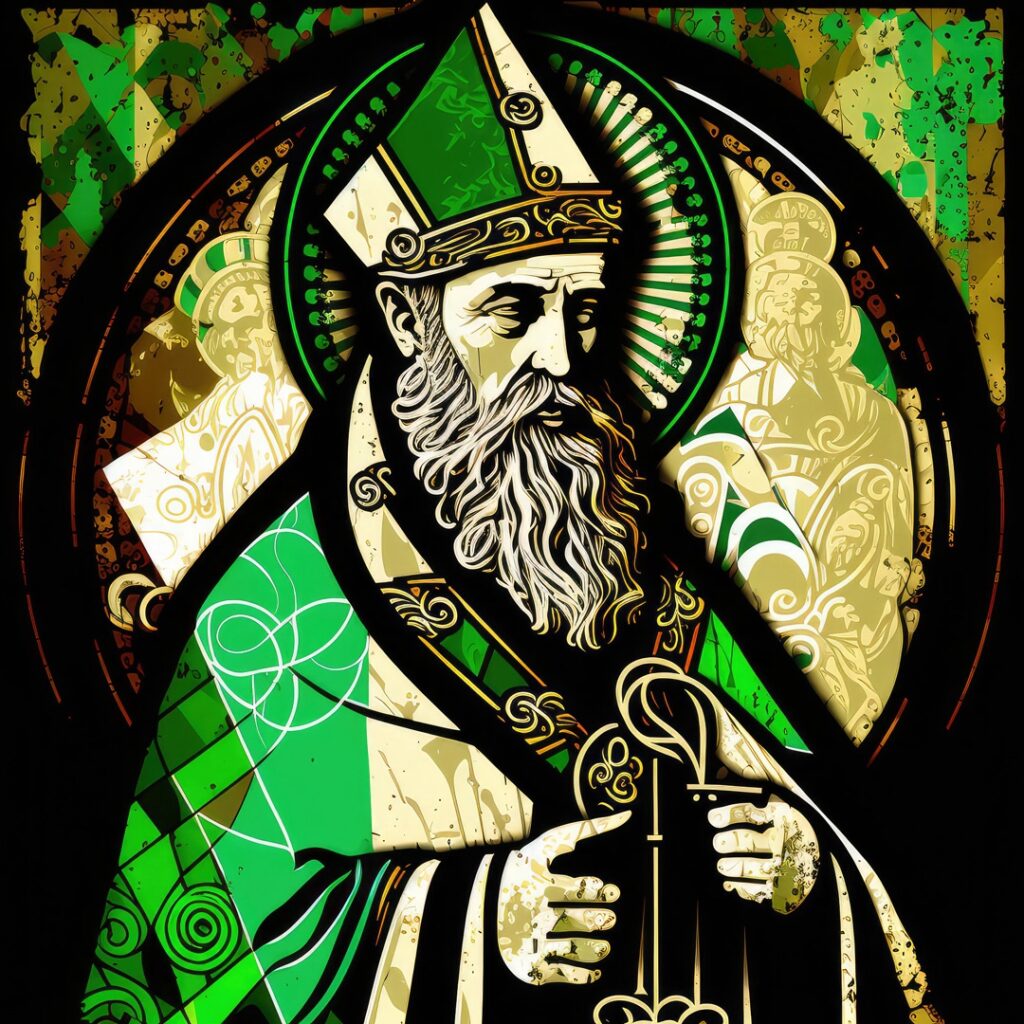
The relationship between Scotland and Ireland has a long and intertwined history, characterized by both cooperation and conflict. Here are some key points highlighting the historical relationship between the two nations:
- Plantation of Ulster: In the 17th century, there was significant interaction between Ireland and Scotland during the Plantation of Ulster. This period saw Scottish settlers, mainly from the Lowlands, being encouraged to settle in Ulster, leading to lasting cultural and demographic influences in Northern Ireland1.
- Common Ancestry: The Irish and Scots share a common ancestry, with both nations tracing their origins back to a common source. This shared heritage has fostered a sense of kinship and connection between the two peoples throughout history4.
- Peoples Movement: The movement of peoples between Scotland and Ireland has been a recurring phenomenon for centuries, predating recorded history. This continuous interaction has contributed to cultural exchanges, shared traditions, and familial ties between the two nations3.
- Sister Nations: Ireland and Scotland are often referred to as sister nations due to their historical connections, shared Celtic roots, and similarities in culture, language, and traditions. This designation reflects the deep historical bonds that exist between the two countries5.
Overall, the relationship between Scotland and Ireland is multifaceted, marked by periods of migration, cultural exchange, conflict, and cooperation that have shaped their shared history and contributed to a sense of mutual understanding and affinity between the two nations.
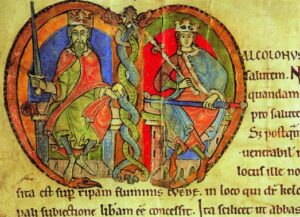
Miracles
Saint Patrick is attributed with several miracles, both during his lifetime and posthumously, that have contributed to his legacy as a patron saint of Ireland.
Here are some of the notable miracles associated with him:
- Banishment of Snakes from Ireland: The most famous miracle attributed to Saint Patrick is the removal of all snakes from Ireland. According to legend, he chased the snakes into the sea after they attacked him during a 40-day fast on a hill12.However, it’s worth noting that post-Ice Age Ireland never had snakes; the story is often interpreted metaphorically, representing the eradication of pagan practices2.
- Use of the Shamrock: Saint Patrick used the three-leaved shamrock to explain the Holy Trinity to the Irish, helping to spread Christianity across the island. This teaching method was effective and memorable, making the shamrock a symbol of Ireland and Saint Patrick’s Day25.
- Raising the Dead: Saint Patrick is said to have raised 33 people from the dead, some of whom had been deceased for many years. This miracle is one of the most astonishing attributed to him, showcasing his divine powers and furthering his mission to spread Christianity24.
- Healing the Sick: Miraculous healings are also attributed to Saint Patrick, including curing the blind and the lame, and even turning a bowl of water into honey to treat a sick woman1.
- Preventing a Flood: One story recounts how Saint Patrick stopped a well in Emptor from overflowing by making the sign of the cross on a piece of bread and uttering a prayer, showcasing his control over nature1.
- Protection from Lies: It is said that a rock used by Saint Patrick during his baptism would reveal liars; if someone gave false testimony while touching it, water would trickle forth1.
- Miraculous Escape and Return: At 16, Saint Patrick was kidnapped and enslaved in Ireland. He escaped after a divine message told him where to find a ship. After returning home, another vision instructed him to return to Ireland as a missionary, marking the beginning of his religious mission25.
These miracles, whether literal or metaphorical, underscore Saint Patrick’s significant role in spreading Christianity in Ireland and his enduring legacy as a figure of spiritual and cultural importance.
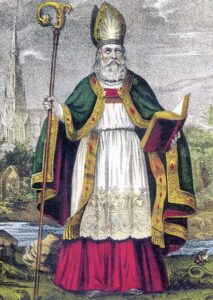
Sailors and Saint Patrick
The significance of sailors to Saint Patrick primarily revolves around his escape from captivity in Ireland and his subsequent return to his family in Britain. After six years of enslavement, Saint Patrick escaped his captors following a divine message. He traveled 200 miles to a seaport, where he convinced some sailors to let him board their ship. This journey eventually led to his reunion with his family24. These sailors played a crucial role in Saint Patrick’s life, facilitating his escape from Ireland and enabling him to begin his religious studies, which later led to his return to Ireland as a missionary234. This episode highlights the pivotal moments in Saint Patrick’s life where sailors directly influenced his destiny, contributing to his eventual sainthood and his mission to spread Christianity throughout Ireland.
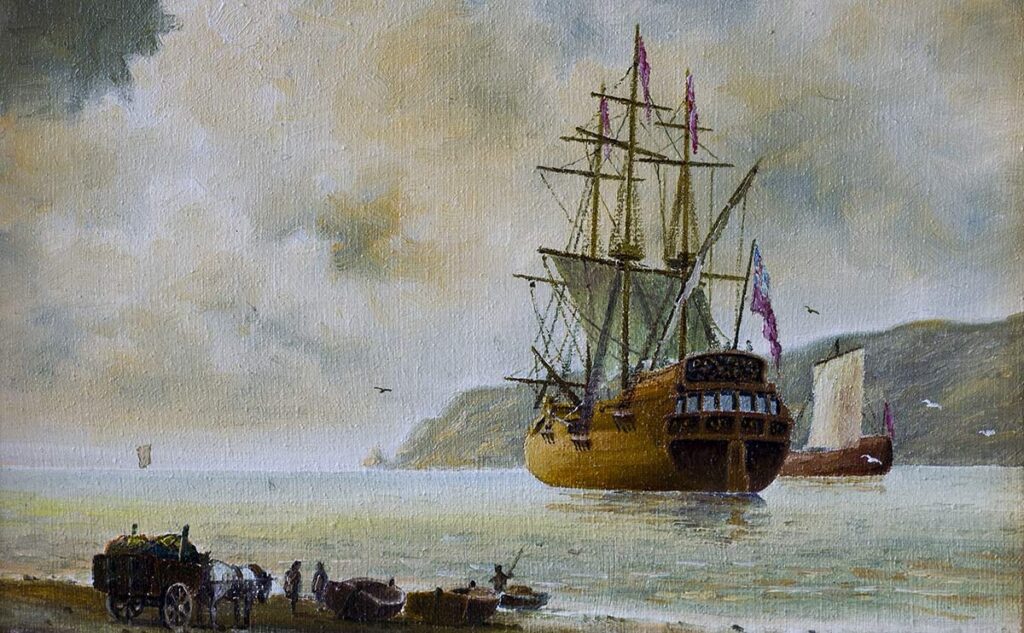
There are several legends and stories about Saint Patrick and sailors that highlight the significant role sailors played in his life:
- Escape from Captivity: After being held captive in Ireland for six years, Saint Patrick escaped following a divine message. He traveled to a seaport where he convinced sailors to let him board their ship, leading to his return to Britain and reunion with his family24.
- Journey to France: In another account, after boarding a ship with sailors, Saint Patrick and the crew abandoned the vessel in France after three days of sailing. They wandered for 28 days, covering 200 miles of territory, until Patrick ultimately reunited with his family4.
- Role in Missionary Work: Sailors were instrumental in facilitating Saint Patrick’s missionary work in Ireland. They helped him navigate the seas, enabling him to spread Christianity throughout the country despite facing initial resistance4.
These stories underscore the pivotal role that sailors played in Saint Patrick’s life, from aiding in his escape from captivity to supporting his mission as a missionary in Ireland. Their assistance was crucial in shaping Saint Patrick’s journey and eventual legacy as the patron saint of Ireland.

The story of Saint Patrick and the sailors saved by Guinness is a true tale that took place in the Irish Sea toward the end of World War I. During this time, eight sailors found themselves in peril while crossing the Irish Sea. Facing the dangers of this busy body of water, they were in desperate need of sustenance and warmth. Fortunately, they had barrels of Guinness aboard their ship. The sailors, stranded and facing harsh conditions, turned to the Guinness barrels for survival. The beer provided them with nourishment and warmth, ultimately saving their lives until they were rescued1.This story highlights a unique and unexpected way in which Guinness, a well-known Irish stout, played a crucial role in saving the lives of these sailors during a challenging time at sea.

Luck of the Irish
“The Luck of the Irish” is a phrase that has evolved in its meaning over time. Initially, it was associated with the success of Irish miners during the gold and silver rushes of the 19th century in the United States, suggesting that their success was due to luck rather than skill or intelligence. This phrase carried a tone of derision14. Over time, however, “the luck of the Irish” has come to be associated with the idea of extreme good fortune, often celebrated in connection with St. Patrick’s Day and Irish culture more broadly.

The elements of pots of gold, rainbows, and leprechauns are part of Irish folklore rather than the Celtic pagan religion. Leprechauns, in particular, are a staple of Irish mythology, known as mischievous fairy creatures. They are often depicted with pots of gold hidden at the end of rainbows, a story that has permeated popular culture, especially around St. Patrick’s Day235. These stories are more about cultural mythology and folklore than religious belief.
Leprechauns are considered a type of fairy known as ‘Sidhe’ in Irish mythology. The mythological origins of leprechauns suggest they were once considered part of the Tuatha Dé Danann, a supernatural race in Irish mythology. Over time, their depiction has evolved, often being portrayed in a manner that simplifies or stereotypes Irish culture3.
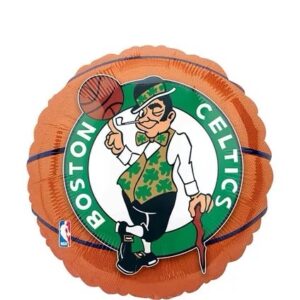
In conclusion, while “the luck of the Irish” and its associated symbols like leprechauns, pots of gold, and rainbows are deeply embedded in Irish folklore and popular culture, they do not originate from Celtic pagan religion. These elements have become iconic in celebrating Irish heritage, especially in the context of St. Patrick’s Day festivities and like corn beef and cabbage have their roots in the Americas.
Why is the color green associated with Saint Patrick? When did Saint Patrick blue stop being used? Is Saint Patrick day an LGBQT day? Is the Rainbow a Saint Patrick day icon?

The color green is associated with Saint Patrick due to its ties to Irish nationalism and the country’s verdant landscape. Originally, blue was linked to Saint Patrick, but green became prominent in the 18th century, symbolizing Irish pride and identity3.
While Saint Patrick blue was historically associated with the saint, green gradually became more prominent due to its connections with Irish nationalism, particularly during periods of rebellion and movements for self-determination.
The association of green with Ireland dates back to the 17th century during the Great Irish Rebellion of 1641 when displaced Catholic landowners rebelled against English authority. Green was used as a symbol of resistance and nationalistic sentiment during this period, representing a desire for self-governance and cultural identity1. The change from blue to green in depicting Saint Patrick reflected a broader shift in the cultural and political landscape of Ireland, emphasizing themes of national pride, identity, and resistance3.

The origins of the wearing of green clothing in the U.S. on St. Patrick’s Day and for St. Patrick’s Day celebrations in general date back to the 19th century, when waves of Irish immigrants came to America looking for better job opportunities, especially after the Great Famine of the 1840s-50s, and began wearing green and carrying Irish flags along with American flags as a point of pride for their home country.
How Green Became Associated With St. Patrick’s Day and All Things Irish

The LGBTQ community appreciates Saint Patrick’s Day as a celebration of diversity and inclusivity, aligning with the spirit of acceptance and unity4. The rainbow, a traditional icon associated with leprechauns, has been embraced as a symbol of diversity and LGBTQ pride, often seen alongside celebrations of Saint Patrick’s Day4.
The term “fairy” has been historically used to refer to individuals within the LGBTQ+ community, particularly gay men, dating back to medieval and Renaissance times. In these periods, “fairy” was employed as a descriptor for those who identified as gay3. Over time, the term evolved and acquired derogatory connotations when used to stereotype or belittle individuals based on their sexual orientation, especially if they were perceived as flamboyant or effeminate4. Some individuals within the LGBTQ+ community have reclaimed the term, which is reflected in rainbows.

Today LGBTQ-oriented people display rainbow flags as a symbol of pride, diversity, and unity within the community. The rainbow flag, a well-known emblem of LGBTQ pride, represents the spectrum of human sexuality and gender diversity. Originally designed in San Francisco in 1978, the flag’s colors reflect the diversity of the LGBTQ community and have become a powerful symbol of visibility and acceptance4.
Displaying rainbow flags allows LGBTQ individuals to express their identity, show solidarity, and advocate for equality and inclusivity.

The rainbow flag has become an iconic symbol that resonates with LGBTQ individuals and allies worldwide, serving as a visual representation of the community’s resilience, pride, and ongoing fight for rights and recognition.
While the rainbow is part of leprechaun fairy mythology, it is essential to recognize the historical context of the term fairy from medieval days and potential to be offensive when used without consent or in a derogatory manner today.
Today, The term “fairy” refers to a mythical being or legendary creature found in the folklore of various European cultures, often described as anthropomorphic spirits with supernatural qualities5. Fairies are not the reason LGBTQ individuals display rainbows. The rainbow flag, a symbol of LGBTQ pride, represents diversity, inclusivity, and unity within the community3. While fairies have been part of folklore and mythology associated with rainbows in various cultures, the LGBTQ community’s use of rainbows as a symbol predates any connection to fairies. The rainbow flag serves as a powerful emblem of LGBTQ identity and solidarity, distinct from its representation in fairy lore
What is the connection between fairies and rainbows?

The connection between fairies and rainbows lies in folklore and mythology, where fairies are often associated with the vibrant colors of rainbows. In various cultural traditions, fairies are depicted as beings that inhabit magical realms and are closely linked to nature, including elements like rainbows. The Rainbow Fairies series, for example, portrays fairies responsible for maintaining the colors of Fairyland shining, reflecting a symbolic connection between fairies and the spectrum of colors found in rainbows1. Additionally, legends from different cultures mention fairies in relation to rainbows, highlighting a mystical and enchanting association between these mythical beings and the colorful arcs that grace the sky5.
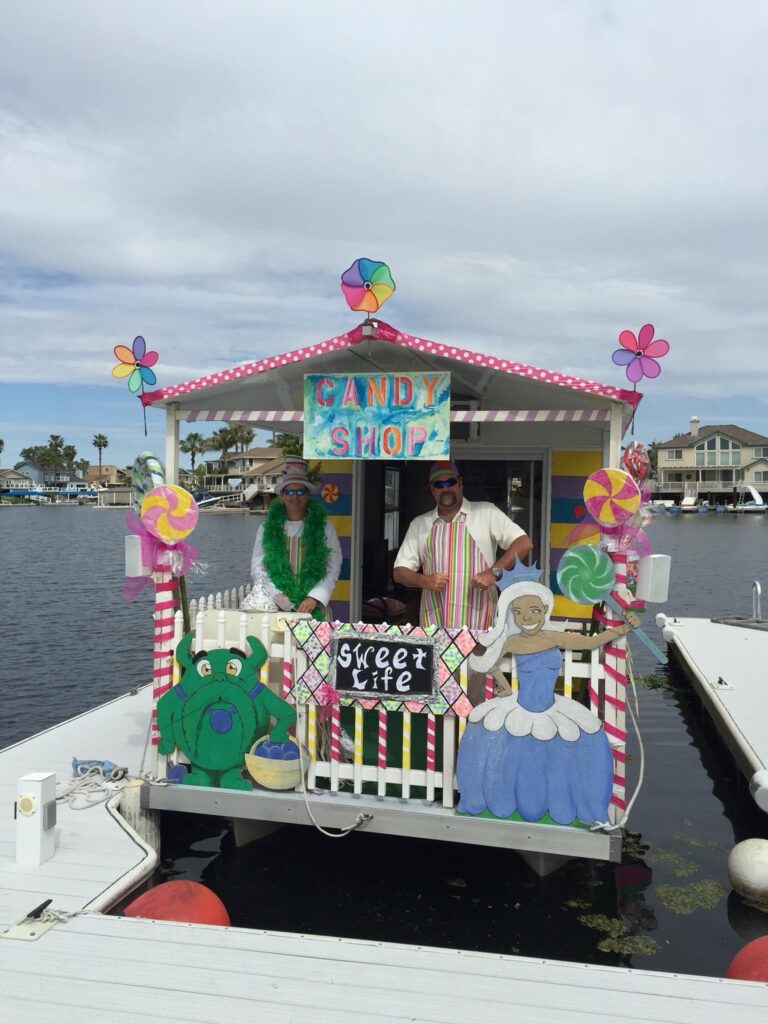
In conclusion let’s quote the American sailor Jack the Mormon “We have been taught not only how to sing the proper songs but also to avoid putting a religious meaning to anything people wear. Even Celtic pagan jewelry is OK.” Happy Saint Patrick day!
